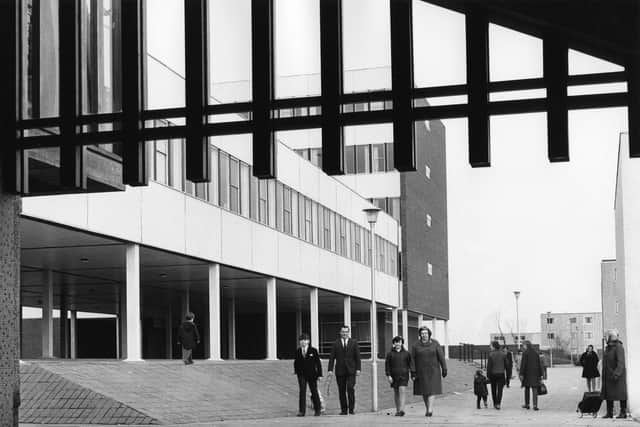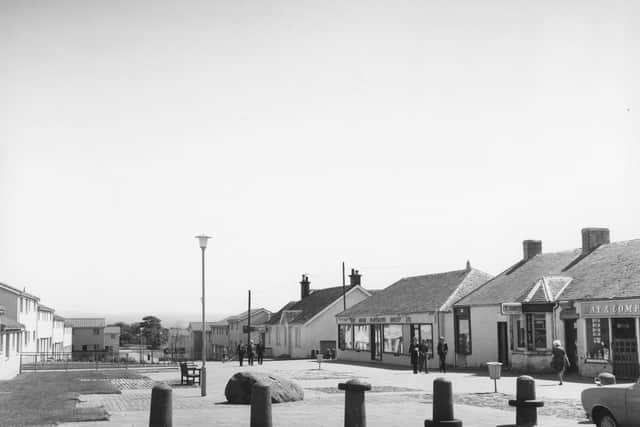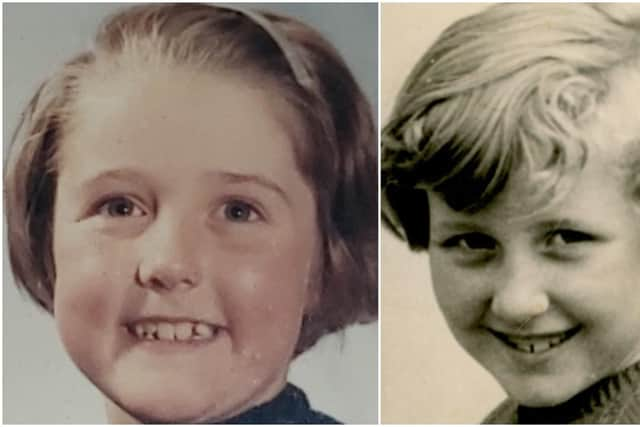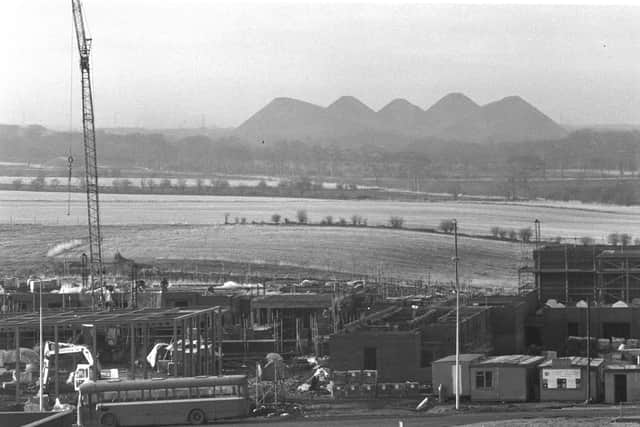Livingston at 60: A New Town forged in ambition and hopes for a better life
and live on Freeview channel 276
Mrs Gordon was brought up in Livingston Station, one of three villages merged into the New Town, which was incorporated on April 16, 1966 – 60 years ago today.
Her mum and dad, an engineer, lived in an attic of a miner’s cottage and as a young girl she felt safe and surrounded by kind people and countryside.
Advertisement
Hide AdAdvertisement
Hide AdMrs Gordon, now of West Calder, said: "There was freedom, fresh area, we were wild and free, everyone knew you and there was never any bother. When they announced Livingston was going to be built, I cried. I didn’t want it at all. I just loved the village the way it was. I didn't want it to upset this idyllic life that we had.”


Livingston was Scotland’s fourth post war New Town - after Cumbernauld, East Kilbride and Glenrothes. It was designed in optimism and sold on the promise of a better life half way down the M8, where new housing, safe streets, jobs and green spaces would meet. It would house the Glasgow ‘overspill’ in better homes and meet the demands of a projected baby boom.
After Livingston was incorporated in 1962, things started to take shape quickly. The country road that led down a track and into the glen where children played on rope swings became a main road. New roads and paths to seemingly nowhere were laid, their destination as yet unknown.
The first houses at Craigshill, next to Livingston Station, quickly appeared with construction workers and employees of the Livingston Development Corporation, the quango set up to deliver the New Town, the first to move in.


Advertisement
Hide AdAdvertisement
Hide AdAmong the first residents was Gillian Tuffield, then eight, who moved from Penicuik with her mother and father after he got a job as an electrician in Pumpherston, with his firm contracted to work on the New Town development.
Ms Tuffield, now 64, recalled an almost “pioneering” spirit among the first arrivals, who lived in the first few rows of housing at Craigshill along with the headmaster, the janitor and the doctor.
She said: “It felt exciting. I remember thinking it was really quite posh because we had central heating instead of a coal fire.”
But there was very little else to show for the New Town in the early days.


Advertisement
Hide AdAdvertisement
Hide AdMs Tuffield said: “There was nothing to do. We played on the building sites. We walked to school through the housing estates that were being built. We made it our own, we loved being out on our bikes.
"There was an excitement about things. Everything was new. We were shown plans about what was coming – the Almondvale Centre, the hospital. But you couldn’t imagine it because it was just fields then. Roads were built and then they just stopped and you wondered what was going to be at the end of them.
"There were just five of us in the school at first. As more houses were built, new people were coming all the time. A lot were from Glasgow, but also from Dumfries, Ayrshire and the Borders. There were a few Americans. There was a family from Pakistan. It felt like a very open and welcoming place.”
Livingston was always designed to be built in stages, but the lack of facilities in the early days proved frustrating for some. There was hardly a shop, with the Almondvale Centre not opening until 1976. For some, the change was too much. Some quickly returned to Glasgow.


Advertisement
Hide AdAdvertisement
Hide AdGetting a house in Livingston was a fairly competitive process as the corporation sought the right mix of people for the New Town.
Dr Valerie Wright, a Glasgow University Research Associate on Building a Modern Scotland: The New Towns, c. 1947-2017, said prospective residents were “completely vetted” at first.
She said: “At least in the first few decades The New Town corporation would send someone around to see people wanting to relocate. They were trying to get a sense of what type of family they were. In the early years you had to have a job before you got a house.”
Livingston rent were relatively high, but for many sacrifices were worth taking. Economic growth and employment was a central driver to Livingston’s development, with lighter industries such as electrical engineering taking root as mining receded. New jobs opened up for women and double income households became more common as aspiration and ambition found a natural home in the New Town.
Advertisement
Hide AdAdvertisement
Hide AdDr Wright said: “Women were working for necessity but families also wanted additional money for holidays, also they had these brand new houses and wanted to fill it with nice things.”
"These were aspirational folk. You can imagine the people who moved to New Towns were much the same as those emigrating to Australia and Canada. There is an element of migration, although in this case they are going to Livingston. For some, it's about escaping and starting again, that wish for a better life.”


Of course, there were issues. The rush of construction meant materials and some design didn’t stand the test of time, in some early cases.. Communities later mobilised for better quality homes in some neighbourhoods. But overall, Livingston – which has a population of just under 57,000 and will bid for city status as part of the Queen's 2022 Platinum Jubilee celebrations, is considered to have worked.
Dr Alistair Fair, an architectural historian at Edinburgh University, who is leading the New Towns project, said: A lot of jobs were created and Livingston became a place where people wanted to live. I think that is still the case now.
Advertisement
Hide AdAdvertisement
Hide Ad“Livingston tends to have been overlooked when you read histories of New Towns. People tend to gravitate towards Cumbernauld but that is unfair. Livingston really has really been quite successful.”
-Almond Valley Heritage Centre and the Living Memory Association with screen a ‘Livingston at 60 at the Howden Park Centre on May 31 with several events planned through the year to mark the 60th anniversary of the New Town.
A message from the Editor:Thank you for reading this article. We're more reliant on your support than ever as the shift in consumer habits brought about by coronavirus impacts our advertisers.
If you haven't already, please consider supporting our trusted, fact-checked journalism by taking out a digital subscription.
Comment Guidelines
National World encourages reader discussion on our stories. User feedback, insights and back-and-forth exchanges add a rich layer of context to reporting. Please review our Community Guidelines before commenting.
